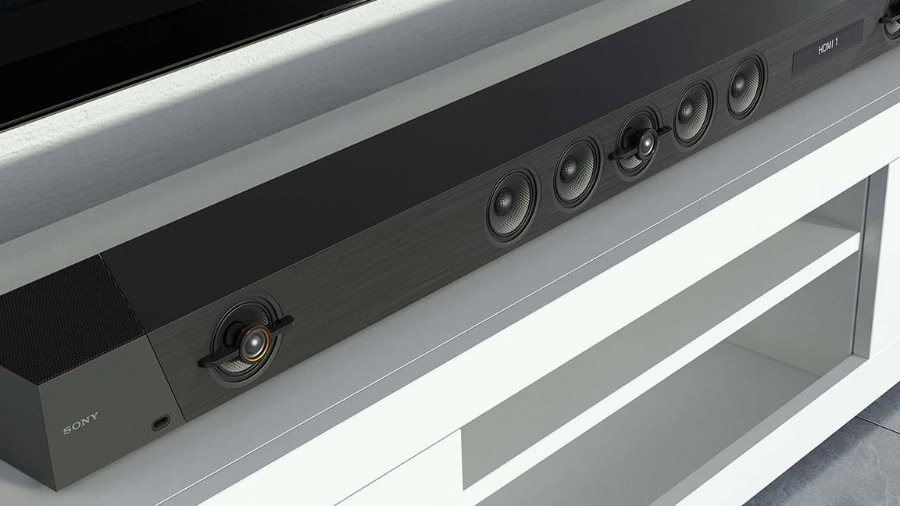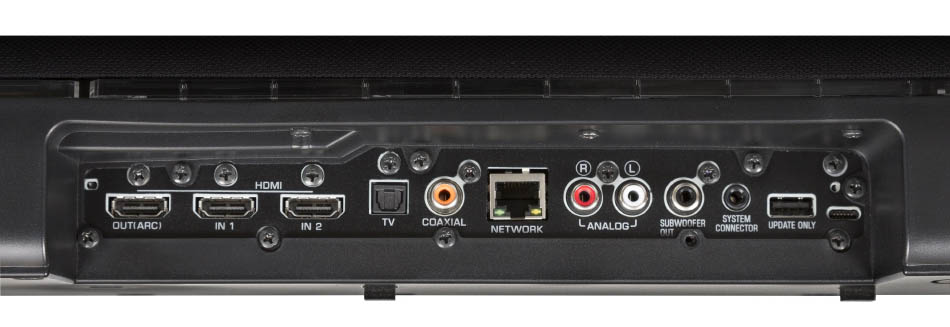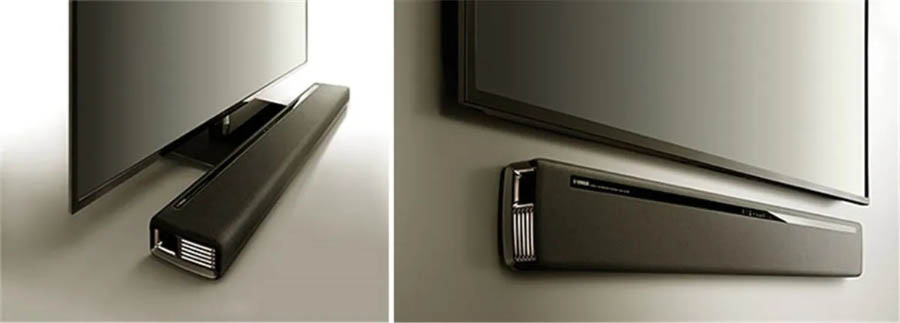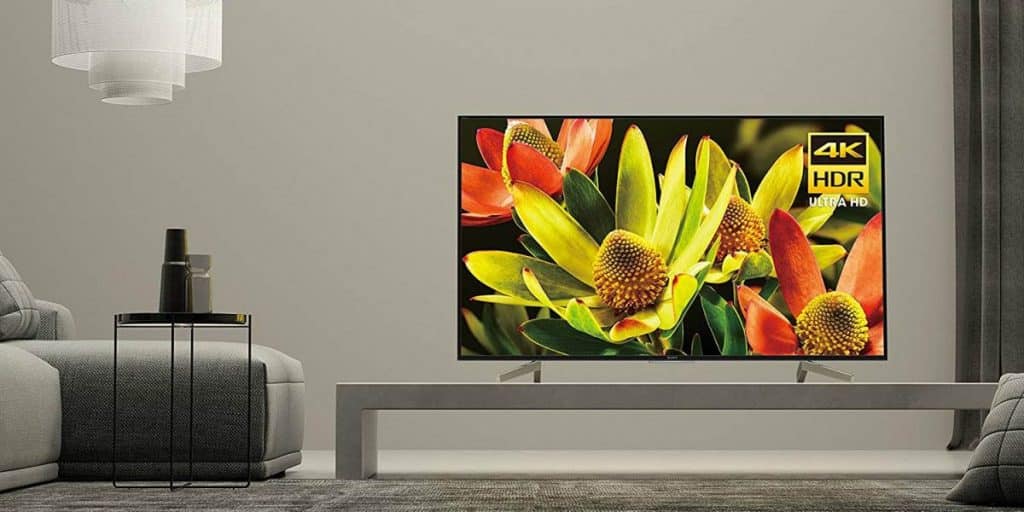Soundbar For Home: How To Choose The Best Model
Soundbars are responsible for reproducing clear, beautiful sound. Knowing how to choose a soundbar, you can avoid buying an overpriced model on the advice of sales consultants. You do not need to have any specific knowledge to choose the equipment yourself. All characteristics are indicated by the manufacturer on the package.
Table of Contents
ToggleWhat soundbars are needed for
Manufacturers of modern TVs are competing with each other in the pursuit of the thinnest frames and flat housings. Unfortunately, first of all, sound quality suffers from it — there is not enough space for powerful speakers. This problem can be solved with the help of a soundbar. It is an elongated loudspeaker made of a lot of small speakers. The soundbar lets you get clear, surround sound, turning your regular TV into a home theater.

Also, sound panels for TV can:
- play files from discs and flash drives;
- play 3D sound;
- catch radio channels;
- connect to any device via Wi-Fi;
- act as a Smart TV set-top box.
Of course, you won’t be able to replace a full-fledged audio system with speakers using a soundbar — the sound panel will sound worse. Nevertheless, there is not always a place for home theater, time, and installation skills. Yes, and audio system wires, which will inevitably hang down from the walls, will not add aesthetics to the room.
How to choose a soundbar
- Type. A mono speaker is the simplest amplifier with a not very good sound, but a low price. Models with a separate subwoofer give a clear sound with powerful bass. Multifunction sound panels are home theater components.
- Independence. Active soundbars have a built-in amplifier and power supply, so they are connected directly to the TV, passive ones need to be connected to the receiver.
- Frequency Range. The range of 20-20,000 Hz is the maximum perceivable by the human ear. The parameters of a good sound panel must be close to these values.
- Power. Optimal power — 200-300 W. This figure is quite enough for a home theater, located in a relatively small room.
- Ways to connect. The HDMI port is suitable for all TVs, except older ones. If you want to control the device via smartphone or laptop, stop on the model that supports Wi-Fi and Bluetooth.
- Several channels. 2.1ch — the most common models. 5.1ch — powerful home theater soundbars. 7.1ch — professional devices with clear sound.
- Placement method. Depending on the size of the room and the TV area, you can buy a shelf model, wall-mounted or panel-mounted.
Types of soundbars
There are five main varieties:
- Mono speaker. This is a soundboard for flat-screen TVs with a plasma screen. Features a built-in subwoofer. Serves as a replacement for the classic television acoustics;
- Sound projector. Acts as a speaker system, receiver, and amplifier. The panel helps equalize the sound of the bass;
- With a separate subwoofer. Creates the effect of presence, and provides a clear 3D sound;
- Sound base. A compact sound device that can additionally play CDs, connect to the phone;
- Multifunctional soundbar. Such a soundbar consists of several speakers providing three-dimensional sound. A TV set with such sound can easily be compared to professional equipment in a cinema.
Most soundbars are placed on the wall or in a cabinet under the TV. They do not take up much space, unlike full-fledged speakers.

Choosing by performance
Type of device
All soundbars can be divided into active and passive. The former is a complete and compact audio system and has a built-in amplifier, processor, power supply, and a set of interfaces. They are connected directly to the TV.
The passive ones need to be connected to a separate receiver. If you need a compact and modern device, it is better to buy an active soundbar; if you already have a receiver, you can buy a passive one.
Technology
One of the main problems with soundbars is a slight distortion of the stereo sound, caused by too small a distance between the left and right speakers. To solve this problem, manufacturers offer different options.
The devices can work by:
- Different orientations of front and side speakers. The most budget solution — the sound is reflected from the walls, creating virtual side panels. In this case, the technology does not have a significant impact on the quality: such a sound device will not play pure tunes.
- Multiple loudspeakers on one channel. The sound is improved by additional virtual speakers and post-processing technology. One of the most common solutions.
- SDA. Such soundbars work thanks to several sound sources. As a result, it is possible to get a clear surround sound.
Sound Parameters
The principle when choosing a soundbar is the same as when buying a TV set. It is proven that humans can perceive frequencies in the range of 20 to 20,000 Hz. A good soundbar conforms to these values.
Power
Power indicates not only the amount of electricity consumed but also the sound volume of the soundbar.
The following conventional classification is accepted:
- Up to 100 watts — suitable for a small TV installed in a room up to 200 ft²;
- 200-300 watts — a powerful unit for a room of up to 450 ft²;
- 300 watts — home theater replacement, suitable for rooms from 550 ft².
You can allow for a small power margin, but no more than 50 watts.
Installing a powerful panel in a small room is not a good idea. Too loud a sound from the TV will be unpleasant to the ears.
You should also pay attention to the power ratio of the amplifier and the subwoofer (if it is external and not built-in). The power of the subwoofer must be twice as much. Otherwise, sagging of low frequencies is inevitable, especially while listening to music at high volume.
Dimensions
One of the significant parameters when choosing a soundbar is its dimensions. If you need a compact version with horizontal installation, pay attention to an inexpensive mono speaker. If you have a lot of free space in your room, you may consider a multifunctional soundbar for the home cinema.
Standard soundbar dimensions: width — 19-63 inches, height — up to 8 inches, weight — up to 40 lbs.
- How to find tv code
- How to buy a tv
- Soundbar vs home cinema
- Best home theater power conditioner
- UHD vs Qled
Ways to connect
There are several options for connecting soundbars:
- AUX. Suitable for old TV sets, as well as smartphones. Such a soundbar is not characterized by its high sound quality. In models from version 5.1ch, such a connector is not installed, as it severely cuts the sound.
- HDMI. The standard option is suitable for most televisions. Provides clear and fast signal transmission.
- Optical cable. This kind of soundbar supports high-quality sound reproduction. Optical cables are often used for home theater connections.
- Analog cable. One of the outdated connection options is that the device loses sound quality.
- Wireless connection — Wi-Fi, Bluetooth. One of the most convenient options is the soundbar can be controlled from your phone or tablet.
- USB. In contrast to the previous options is not used to connect to the TV. You can connect a flash drive with music through USB.
- Ethernet. Used to connect the device to the local network, which, in turn, is needed to work with other equipment. The need for LAN ports is eliminated if the device supports Wi-Fi.

Multichannel
The quality of sound depends on the number of channels.
The soundbar is available in the following variants:
- 2.0. Soundbar without a subwoofer. Models with this number of channels are some of the most budget-friendly. But you should not expect them to have good surround sound: because of the budget design, the low frequencies are constantly sagging.
- 2.1. One of the most common options among inexpensive models. Provides acceptable sound quality.
- 3.1. Practically has no differences from the previous version. Works in Dolby Stereo technology. The left and right channels are used for music and effects, and the central channel is used for dialogs.
- 5.1 Home theater devices with 3D sound and immersive effects. The difference with previous models is that 3.1ch ignores the fourth soundtrack, while 5.1ch picks it up and creates surround sound.
- 7.1. Expensive and powerful models for home theaters and watching movies in 4K resolution.
- Dolby Atmos: This system refers to the presence of additional sound sources, usually on the ceiling plus the regular 5.1ch system. These auxiliary sound sources are used to reproduce the sounds coming from above. This innovation allows you to fully immerse yourself in surround sound. If you see rain and lightning on the screen, the sound of drops and thunder will come from above. In a soundbar, this is achieved by adding speakers aimed at the ceiling of the room. According to the designation of the speaker system in the soundbar, additional sound sources for Dolby Atmos implementation are denoted by a third digit, for example, the designation 5.1.2 stands for 5 main surround sound speakers, 1 is a subwoofer, 2 and there are two additional Dolby Atmos speakers.
We can say that when choosing the number of channels, try to take the device with the maximum number of channels that your amount of money to buy.
It does not always make sense to buy the most expensive model with five channels. If you rarely watch movies that are not in 4K quality, the difference will not be noticeable.
Installation method
Panels can be:
- Shelf. They are placed directly on one shelf with your TV.
- Wall-mounted. Mounted on the wall next to the TV.
- Standing Panels. Are both an amplifier and a shelf for the TV.
In practice, most models have a wall mount but can also stand on a shelf. There are very few stand models.

What else to pay attention to
- The presence of additional features. The best soundbars can connect directly to a smartphone, play files from discs and flash drives, and have an extended frequency range and the possibility of fine-tuning.
- Subwoofer presence. Models with a built-in subwoofer are cheaper, while those with an external one produce a powerful and beautiful sound. Decide which of the indicators is a priority for you.
- Availability of DLNA technology. It simplifies the work with external devices — additional speakers, audio system, and computer. Available only in panels that support connection via Wi-Fi.
- Panel width. Matched to the width of the TV set. The larger it is, the stronger the stereo effect will be.
- The presence of additional speakers. Some expensive models come with speakers that make the sound better and clearer. However, in this case, one of the main advantages of the sound panel — saving space — is lost.
Author
-
Author of articles on tvrvi.com. I know all the TV industry news and spend a lot of time to research TV technology.






